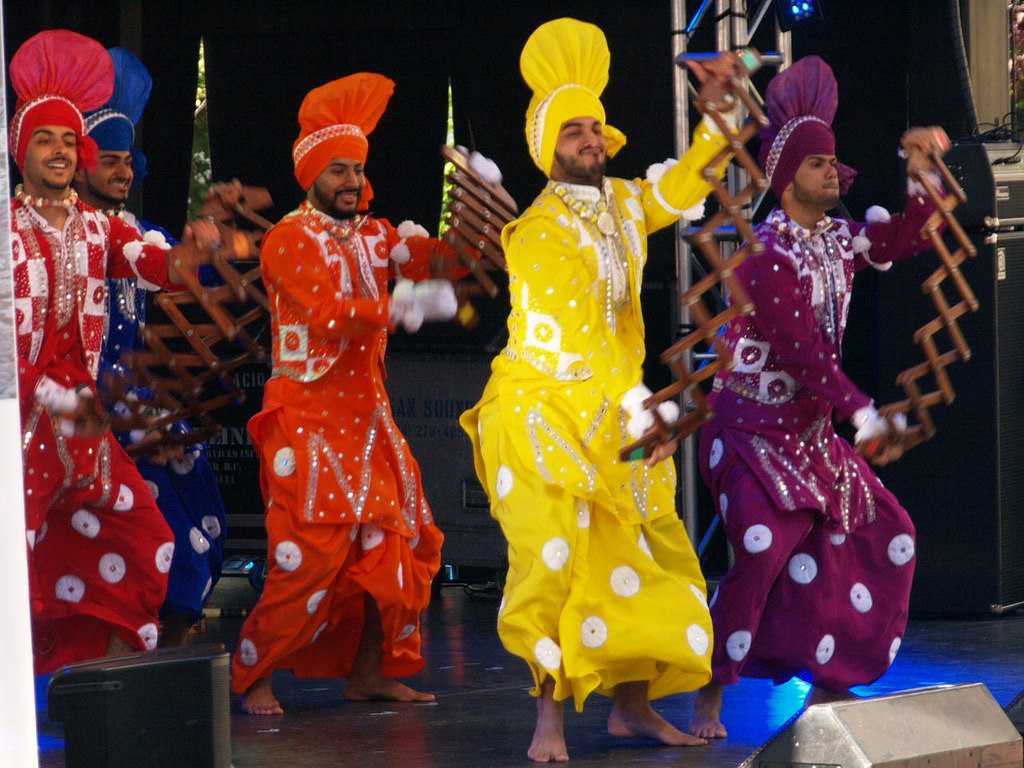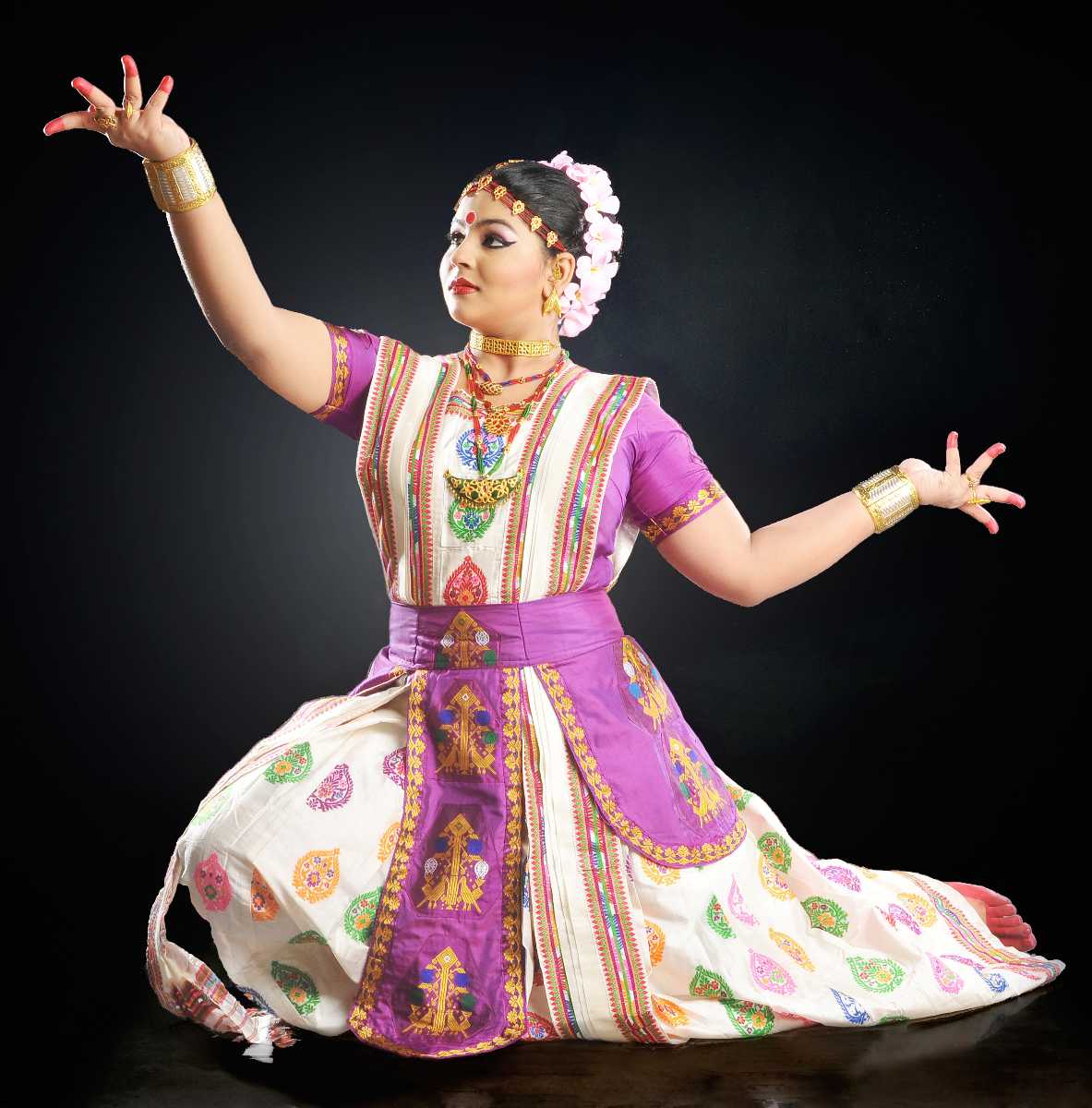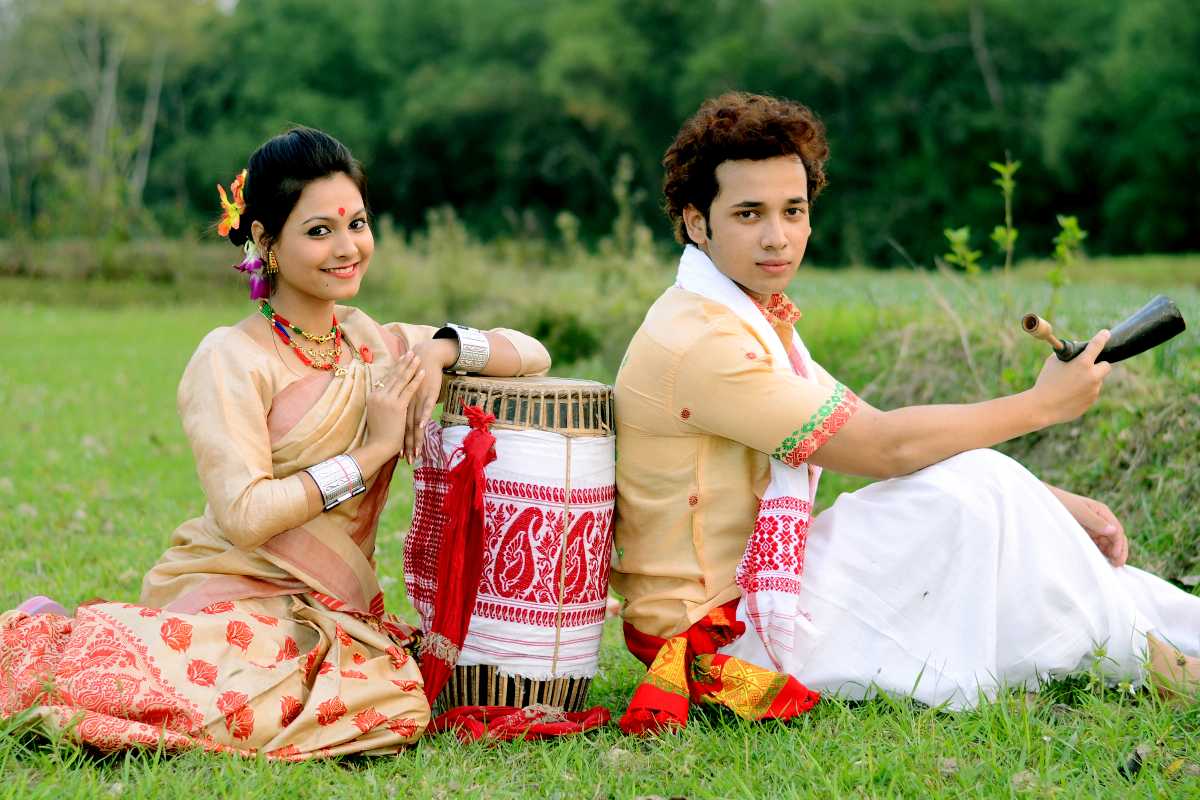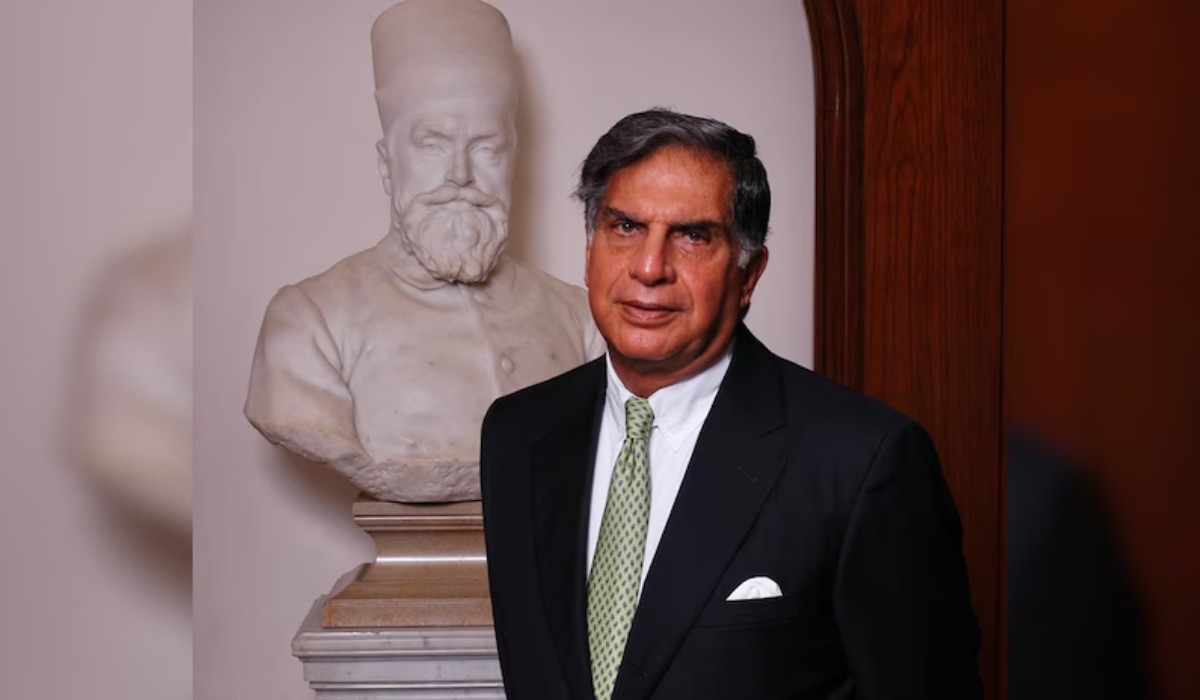India has many dances, coming from every state in the country, although there are only six forms of the classical dances recognised by India on a national level. They are Bharatnatyam, Kathak, Kathakali, Manipuri, Kuchipudi, and Odissi. The folk dances of India are much more than mere body movements, from the very ancient times the classical dance forms of India is considered as a discipline and a way to devote yourself to God through art.
1. Bharatnatyam- Tamil Nadu, South India
 Performed on the celestial tunes of the Carnatic music, Bharatnatyam comes from the state of Tamil Nadu in South. The origins of Bharatnatyam can be traced back to 1000 BC, and it originates from the ancient temples of Tamil Nadu performed by the women of the classical period. The dance form is known for its beautiful body movements and gestures which are called Mudras in the traditional language. It focuses on the hand gestures, leg movement and the facial expressions of the dancer. This dance form was very prevalent before the British era but was profoundly depressed during the colonial period. However, India kept the dance form alive in the houses, and today it is recognised as one of the most respectable art forms in India especially in the Southern region of the country where it is a moment of pride for the women of the house to learn the classical dance form of Bharatnatyam.
Performed on the celestial tunes of the Carnatic music, Bharatnatyam comes from the state of Tamil Nadu in South. The origins of Bharatnatyam can be traced back to 1000 BC, and it originates from the ancient temples of Tamil Nadu performed by the women of the classical period. The dance form is known for its beautiful body movements and gestures which are called Mudras in the traditional language. It focuses on the hand gestures, leg movement and the facial expressions of the dancer. This dance form was very prevalent before the British era but was profoundly depressed during the colonial period. However, India kept the dance form alive in the houses, and today it is recognised as one of the most respectable art forms in India especially in the Southern region of the country where it is a moment of pride for the women of the house to learn the classical dance form of Bharatnatyam.
2. Kathak- Uttar Pradesh, North India
 Coming from the northern part of the country from the state of Uttar Pradesh, Kathak comes from the word ‘Katha’ which means “story” in Hindi. It isn’t a very smart guess for one to make that Kathak is performed in the form of storytelling through the body movements used by the dancer. Kathak is often referred to as the dance of love, and it can be performed by both by the male and female dancer together. This dance form focuses highly on the ankle movements complemented by the ankle that has to match the beats of the music. Ankle bells or gunghroos as they are called in the traditional language is an important part of the discipline of this dance form. Various distinctions can be witnessed in this dance forms as it is performed in various places in the country which includes Jaipur, Benaras, and Lucknow.
Coming from the northern part of the country from the state of Uttar Pradesh, Kathak comes from the word ‘Katha’ which means “story” in Hindi. It isn’t a very smart guess for one to make that Kathak is performed in the form of storytelling through the body movements used by the dancer. Kathak is often referred to as the dance of love, and it can be performed by both by the male and female dancer together. This dance form focuses highly on the ankle movements complemented by the ankle that has to match the beats of the music. Ankle bells or gunghroos as they are called in the traditional language is an important part of the discipline of this dance form. Various distinctions can be witnessed in this dance forms as it is performed in various places in the country which includes Jaipur, Benaras, and Lucknow.
3. Kathakali- Kerala, South India
 Kathakali is another traditional dance form of India which relates to the storytelling. Kathakali translates to the ‘storyteller’ in the country’s language. Coming from the Southern region of the country from Kerala, Kathakali is one of the most renowned and religious dances forms of India. It originates from the tales of Ramayana and Shiva stories. Kathakali includes the intriguing face movements and the heavy costumes which include the traditional face masks and body paints (generally green). The music which includes only the vocals is called Soppanam. The storytelling of the epic Hindu mythology tales depicting both evil and good is shown through the conversation between the dancers only through their body gestures and facial expressions. Simply fascinating to watch!
Kathakali is another traditional dance form of India which relates to the storytelling. Kathakali translates to the ‘storyteller’ in the country’s language. Coming from the Southern region of the country from Kerala, Kathakali is one of the most renowned and religious dances forms of India. It originates from the tales of Ramayana and Shiva stories. Kathakali includes the intriguing face movements and the heavy costumes which include the traditional face masks and body paints (generally green). The music which includes only the vocals is called Soppanam. The storytelling of the epic Hindu mythology tales depicting both evil and good is shown through the conversation between the dancers only through their body gestures and facial expressions. Simply fascinating to watch!
4. Manipuri- Manipur, North East India
 As you stroll towards the North-east India which is brimming with the rich tradition and their unique culture, Manipuri comes as an important symbol to represent the state of Manipur from the region. This dance form is performed to narrate the romantic relationship between the Hindu gods Radha and Krishna, which is famously known as RaasLeela. This art form is performed in a team with the traditional Manipuri costumes and makeup to narrate the tale of the two gods. The dance is performed on the narrative chanting and the music created by the Indian classical instruments.
As you stroll towards the North-east India which is brimming with the rich tradition and their unique culture, Manipuri comes as an important symbol to represent the state of Manipur from the region. This dance form is performed to narrate the romantic relationship between the Hindu gods Radha and Krishna, which is famously known as RaasLeela. This art form is performed in a team with the traditional Manipuri costumes and makeup to narrate the tale of the two gods. The dance is performed on the narrative chanting and the music created by the Indian classical instruments.
5. Kuchipudi- Andhra Pradesh
 Belonging to the Andhra Pradesh, Kuchipudi is probably the toughest form of classical dance in India. Kuchipudi is not just considered as the dance but a whole religious procedure dedicated to God which includes certain rituals such as sprinkling the holy water, burning the incense sticks and praying to God. Kuchipudi includes both singing and dancing by the performer which is why it requires both the skill and much more dedication than any other art forms in India. In the earlier period, Kuchipudi was only performed by the male dancers in the temples, specifically the Brahmins( Upper caste of the society) but with the passage of time, it became famous amongst the women and nowadays it is mostly performed by the female dancers.
Belonging to the Andhra Pradesh, Kuchipudi is probably the toughest form of classical dance in India. Kuchipudi is not just considered as the dance but a whole religious procedure dedicated to God which includes certain rituals such as sprinkling the holy water, burning the incense sticks and praying to God. Kuchipudi includes both singing and dancing by the performer which is why it requires both the skill and much more dedication than any other art forms in India. In the earlier period, Kuchipudi was only performed by the male dancers in the temples, specifically the Brahmins( Upper caste of the society) but with the passage of time, it became famous amongst the women and nowadays it is mostly performed by the female dancers.
6. Odissi- Odisha, East India
 Odissi dance form comes from the state of Odisha in the eastern part of India. The traditional dance has been derived from the Hindu temples in Odisha. Most of the gestures and movements (Mudras) are inspired by the sculptors and idols belonging to the ancient temples of India. The dance is performed as a way to express the mythological tales of Hindu gods, including that of Shiva and Surya. The dance is accompanied by a mythical story, Hindi poem in the form of music by the musicians. Odissi is considered as the oldest dance forms of India which are surviving till today. Odissi dance is performed mostly by the women dancers, and it includes more than 50 intriguing mudras (body movements).
Odissi dance form comes from the state of Odisha in the eastern part of India. The traditional dance has been derived from the Hindu temples in Odisha. Most of the gestures and movements (Mudras) are inspired by the sculptors and idols belonging to the ancient temples of India. The dance is performed as a way to express the mythological tales of Hindu gods, including that of Shiva and Surya. The dance is accompanied by a mythical story, Hindi poem in the form of music by the musicians. Odissi is considered as the oldest dance forms of India which are surviving till today. Odissi dance is performed mostly by the women dancers, and it includes more than 50 intriguing mudras (body movements).
7. Bhangra/Gidda- Punjab, North India
 Belonging to Punjab, Bhangra is a heart-pumping dance adorned with the loud beats of dhol( traditional Indian instrument). It is very prevalent in traditional Punjabi festivals.
Belonging to Punjab, Bhangra is a heart-pumping dance adorned with the loud beats of dhol( traditional Indian instrument). It is very prevalent in traditional Punjabi festivals.
8. Lavani- Maharashtra, West India

9. Sattriya Dance- Assam, North East India
 Mahapurusha Sankaradeva, a Vaishnava saint and reformer of Assam, introduced Sattriya dance in the 15th century AD. This dance form was preserved in the Sattras or the Vaishnava Maths; therefore, it remained a living tradition. This dance was an artistic way of presenting mythological teachings. Traditionally this dance was performed by the male monks or bhokots. However, today, the practice has changed in many ways. The theme is not just related to mythology, and the performances are not limited to the Sattras. Even women can perform Sattriya dance and on the stage.
Mahapurusha Sankaradeva, a Vaishnava saint and reformer of Assam, introduced Sattriya dance in the 15th century AD. This dance form was preserved in the Sattras or the Vaishnava Maths; therefore, it remained a living tradition. This dance was an artistic way of presenting mythological teachings. Traditionally this dance was performed by the male monks or bhokots. However, today, the practice has changed in many ways. The theme is not just related to mythology, and the performances are not limited to the Sattras. Even women can perform Sattriya dance and on the stage.
10. Bihu- Assam, North-east India
 Young men and women mostly perform this joyous folk dance from Assam during the Bihu festival. The dancers follow a pattern of rapid hand movement, quick steps and a rhythmic swaying of hips wearing the traditional Assamese clothing with beautiful accessories. Marking the beginning of spring season, Bihu recites the happiness and heritage of Assam and is performed on the occasion of Rangali Bihu. The dhol, Xutuli, Toka, Baanhi, Gogona are the instruments used to play the traditional tunes for the performance. The origin of Bihu is not very known, although the records profoundly state that it is originated from the Bisu dance performed by communities of Upper Assam like the Sonowal Kacharis, Deoris, Moran, Chutias and Borahis. The dance form isn’t just known in India but globally popular. Additionally, this popular Indian Dance was performed at the London Olympics in 2012.
Young men and women mostly perform this joyous folk dance from Assam during the Bihu festival. The dancers follow a pattern of rapid hand movement, quick steps and a rhythmic swaying of hips wearing the traditional Assamese clothing with beautiful accessories. Marking the beginning of spring season, Bihu recites the happiness and heritage of Assam and is performed on the occasion of Rangali Bihu. The dhol, Xutuli, Toka, Baanhi, Gogona are the instruments used to play the traditional tunes for the performance. The origin of Bihu is not very known, although the records profoundly state that it is originated from the Bisu dance performed by communities of Upper Assam like the Sonowal Kacharis, Deoris, Moran, Chutias and Borahis. The dance form isn’t just known in India but globally popular. Additionally, this popular Indian Dance was performed at the London Olympics in 2012.
Other Dance Forms in India & Their States
Andhra Pradesh | Kolattam, Vilasini Natyam, Dhimsa |
Arunachal Pradesh | Aji Lamu, Roppi, Phoning |
Assam | Bagurumba, Ali Ai Ligang |
Bihar | Kajari, Jhumari |
Chhattisgarh | Dandari, Gendi, Panthi, Karma, Damkach |
Goa | Mando, Talgari, Suvari, Dasarawadan, Kunbi, Fugadi |
Gujarat | Raas, Bhavai, Tippani |
Haryana | Gugga, Khoria |
Himachal Pradesh | Kullu Nati, Namgen, Hikat, Chham |
Kashmir | Dumhal, Kud, Bhand Jashan |
Jharkhand | Phagua |
Karnataka | Krishna Parijatha, Nagamandala, Bhootha Aradhane |
Kerala | Kaikottikali, Thumbi Thullal |
Madhya Pradesh | Karma, Gaur Maria, Kaksar, Ahiri |
Maharashtra | Pavri, Dhangari Gaja |
Manipur | Khamba Thoibi, Pung Cholom |
Meghalaya | Khuallam, Nongkrem |
Mizoram | Cheraw, Khuallam |
Nagaland | Changlo-Sua lua |
Odisha | Ghumura, Ruk Mar, Goti Pua |
Punjab | Jhumar |
Rajasthan | Kuccgi ghodi, Kalbelia, Bhavai, Sapera dance |
Sikkim | Singhi Cham, Khukuri, Talachi |
Tamil Nadu | Karagaattam, Mayil Attam, Kolaattam, Kummi, Kavadi |
Tripura | Garia, Hozagiri |
Uttar Pradesh | Raaslila, Charkula |
Uttarakhand | Barada Nati, Chapeli, Langvir |
West Bengal | Gambhira, Kalikapatadi, Domni |











